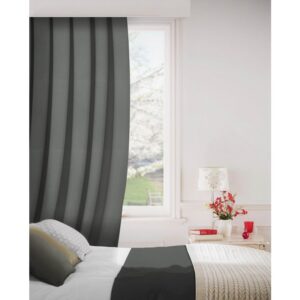
Knowing the most efficient and safest ways to manufacture and install window blinds is essential when choosing ones that will last a long time. After all, you must ensure the safety of your employees and family. You must also be familiar with the best methods to handle and use these instalments to reap their full benefits.
In this article, you will learn about various safety aspects related to window blinds and curtain fabrics. Read on.
Operating Window Blinds
An alternative to chains or cords, a crank handle can be used to operate blinds. This is especially useful for handling blinds that can be difficult to reach
Electric operation is becoming more popular in homes and commercial buildings where the restriction of control may be necessary. This way, the window blinds are operated through a handheld remote, switch, phone automation control, and so on. We recommend seeking expert advice before going with electric operation for your blinds.
Choosing Window Blind Fabrics
Many stores are becoming keener about helping preserve the environment by offering eco-friendly fabric options. Some examples are flame-retardant and reflective fabrics that are made from sustainable sources. You can also be sure that these fabrics are PVC-free and manufactured entirely from plants.
Make sure to purchase fabrics that meet health and safety regulations as well. The ideal material should prevent the spread of viruses and bacteria, protect you from harmful UV rays, and be flame-resistant.
Solar Protection
Excessive heat trapped in window fabrics can contribute to the over-heating of many commercial and residential buildings. This is why picking fabrics with solar reflection properties is crucial. These products also help reduce your carbon footprint, save expenses on energy expenditure, and reduce the impact of establishments on the environment.
Window fabrics with sun protection also decrease the risks of eye disorders, skin cancer, and immune system suppression.
Antimicrobial Technology
Fabrics that come with this feature can help protect you against a broad spectrum of bacteria. After all, washing alone can not entirely eliminate microorganisms, stains, and foul odours.
Choosing fabrics with antimicrobial coating will ensure your health, maintain the fresh look of your space, and make your items last for a long time. These window fabrics are especially beneficial for hospitals, clinics, schools, and care homes as they require infection-free environments.
Flame-Retardant Curtain Fabrics
All window blinds and fabrics in public properties should be manufactured with materials that are resistant to ignition. Otherwise, they must be chemically treated to comply with British Standards BS 5867.
The two types of British Standards for fire-retardant treatments are:
- Type B - This is applicable to hotels, offices, and public buildings. The fabric passes the test if the flame does not reach any of its edges and no debris falls from the burning material.
- Type C - This is a code for healthcare facilities. A similar criterion applies, but the fabric’s after flame and afterglow should not go longer than 2.5 seconds.
Conclusion
Top-quality window blinds and fabrics are an excellent investment that can ensure your occupants’ comfort and enhance your space’s appearance. To reap their benefits for many years, remember to purchase ones made with sustainable materials and follow the safety guidelines.
If you need Flame Retardant Blinds for your business, turn to Direct Fabrics. We are a supplier of fabrics for hotels, care homes, schools, and more. Get a quick quote today!




